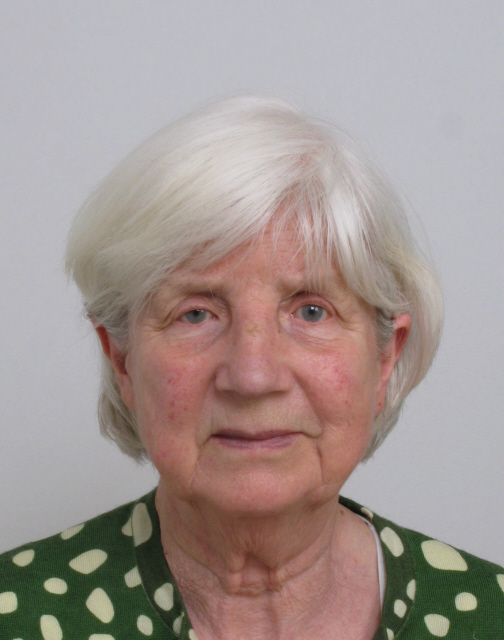
Liesbeth Schlichting
l.schlichting@inter.nl.net

Jacqueline Van Kampen
UiL OTS
Utrecht University
N.J.vanKampen@uu.nl
website
 |
Liesbeth Schlichting l.schlichting@inter.nl.net |  |
Jacqueline Van Kampen UiL OTS Utrecht University N.J.vanKampen@uu.nl website |
| Participants: | 4 |
| Type of Study: | case studies |
| Location: | Netherlands |
| Media type: | audio |
| DOI: | doi:10.21415/0PRD-ZC51 |
Schlichting, Liesbeth (1987) TARSP Taal Analyse Remediëring en Screening Procedure, Taalontwikkelingsschaal van Nederlandse kinderen van 1-4 jaar (Language Analysis Remediation and Screening Procedure. Language development scale) of Dutch children 1-4 years). Pearson Benelux B.V.
Schlichting, J.E.P.T., Eldik, M.C.M. van, Lutje Spelberg, H.C., Meulen, B.F. van der & Meulen, Sj. van der (1995) Schlichting Test voor Taalproductie (Schlichting Test for Language Production) Nijmegen: Berkhout.
Schlichting, Liesbeth (1996). Discovering Syntax: a study in Dutch language acquisition. Nijmegen: Nijmegen University Press. www.liesbethschlichting.nl
Schlichting, L. & Lutje Spelberg H.C. (2003) ‘A test for measuring syntactic development in young children.’ Language Testing, 20(3), 241-267.
van Kampen, Jacqueline (2009) ‘The non-biological evolution of grammar: wh-question formation in Germanic.’ Biolinguistics, 3(2-3), 154-185.
van Kampen, Jacqueline (2020) ‘Discourse-related V1 declaratives in Dutch’ Linguistics in the Netherlands 37, ed. by Elena Tribushinina & Mark Dingemanse, pp.149-165. Amsterdam/Philadelphia: John Benjamins.
In accordance with TalkBank rules, any use of data from this corpus must be accompanied by at least one of the above references.
Further related reference
Le Boeuf, Christine (1968). Raconte – 55 Historiettes en image (Stories and pictures). Paris: L’Ecole.
Lutje Spelberg, H.C. & Meulen, Sj. van der (1992). Meten van taalbegrip en taalproductie. (Measuring Language Comprehension and Language Production) Project 560-256-040. Wetenschappelijk verslag (Scientific report). Psychon Jaarverslag (Annual report). 1992. Den Haag: Stichting voor wetenschappelijk onderzoek in de psychologie en de psychonomie in Nederland.
Creating the corpus was part of a project funded by the Dutch Organisation for Scientific Research (nr 560.256.040) Meten van Taalbegrip en Taalproductie (Measuring Language Comprehension and Language Production) (Lutje Spelberg & Van der Meulen, 1992). The purpose of the project was to develop and standardize language tests for Dutch children aged 15 months to 75 months. Little knowledge of morphosyntactic development was available of Dutch children from 48 – 75 months. The corpus was designed to learn more about morphosyntactic development at that age.
The design of the corpus was to take spontaneous language samples for two years. The longitudinal data were gathered from 1990-1992. The six participants were two boys and four girls. The developmental language criterion for participation of the children was that some complex sentences were produced in their spontaneous language.
The children's dates of birth are as follows:
Several recordings were recorded on the same day, one from Carl, one from Maike, and sometimes one with the two together. The same pattern was used for Sanne and Tinke. As a result, there are six folders, four for the children individually and two for the combinations. The names of the files in the combined CarlMaike and SanneTinke folder use the ages for Carl and Sanne. In these recordings, Maike is six days older and Tinke is 24 days younger.
The language samples of the six children were collected by Liesbeth Schlichting and two research assistants. The language samples of four of the children (Maike, Carl, Sanne and Tinke) were transcribed under the supervision of Liesbeth Schlichting. Maike and Carl’s data were collected and transcribed by Maike’s mother, Yvonne Kiers, a bachelor of the Dutch language. Carl was Maike’s neighbor. Tinke and Sanne’s data were collected and transcribed by Tinke’s mother, Saskia Megens, a bachelor of Speech Language Pathology. Sanne was Tinke’s niece. The ages of the children at the first sampling were 3;5 (Tinke and Sanne) to 3;6 (Maike and Carl). At a later stage, Jacqueline van Kampen corrected and supplemented the transcriptions. The transcription of the data of the two other children is still in progress. Session level spreadsheet descriptions are available for Carl and Maike and Sanne and Tinke in the files download.
The names of the audio files do not currently align correctly with the names of the transcript files. This is particularly true for the CarlMaike audio files. FOr those even the use of the spreadsheet doesn't make it clear what aligns with what. For SanneTinke, the alignment is better. However, this will have to be redone when the transcripts eventually get linked to the audio.
The samples of the four children were taken in the assistants’ homes, or in the homes of Maike’s neighbor Carl or Tinke’s niece, Sanne and recorded on digital audio tapes (DAT). The language samples were collected every second month during the first year of the project from the month of June 1990, and every third month in the second year resulting in 10 recordings per child, in total 40 recordings. In addition, 10 short recordings were made of both pairs of children (Maike and Carl, Tinke and Sanne), in total 20 recordings. Maike’s brother Ernst and Tinke’s brother Bob sometimes joined in the interaction. In some samples the children were asked to tell a story based on a set of pictures from the French narrative instrument Raconte (Le Boeuf, 1968) which can be found in the files download. In some samples, children were presented with concept items of the Test for Sentence Development (Schlichting & Spelberg 2003). These consisted of sentences to be imitated in a functional context.
The data have been gathered in a research project supported by the Dutch Research Council (NWO) grant nr. 560.256.040 to Henk Lutje Spelberg & Sjoeke van der Meulen.
In this research there has been assistance from Saskia Megens and Yvonne Kiers for the collecting of the data and transcriptions and from Jacco van Elst for the digital transfer of the DAT tapes to the computer.